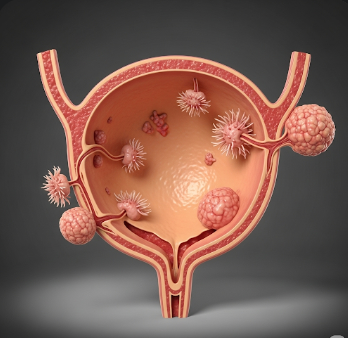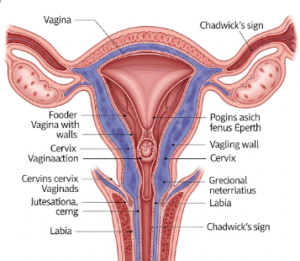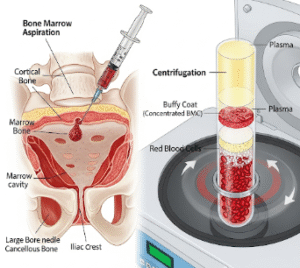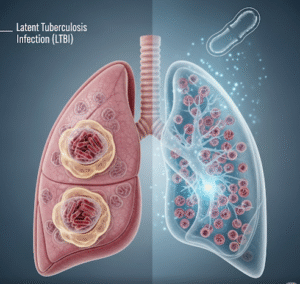Overview
Bladder cancer is a malignant tumor originating in the lining of the bladder, most commonly the urothelial cells that line the inner surface. It is one of the most common urological cancers worldwide and is prevalent in both men and women, though men are affected more frequently. Early detection is crucial because bladder cancer has a high recurrence rate but responds well to treatment if caught early.
In Korea, advanced diagnostic imaging, cystoscopic procedures, and specialized oncology centers provide comprehensive care for bladder cancer patients. Korean hospitals emphasize minimally invasive treatments, personalized therapy plans, and rigorous follow-up to manage recurrence risk.
What is Bladder Cancer?
Bladder cancer occurs when cells in the bladder lining grow uncontrollably, forming tumors. It can be classified based on invasiveness:
- Non-muscle invasive bladder cancer (NMIBC): Tumors confined to the bladder lining; often treatable with local procedures
- Muscle-invasive bladder cancer (MIBC): Tumors penetrate the bladder wall; requires more aggressive treatment including surgery or systemic therapy
- Metastatic bladder cancer: Cancer that spreads to other organs such as lymph nodes, lungs, liver, or bones
Bladder cancer may develop due to genetic mutations, environmental exposures, and chronic irritation of the bladder lining. Early-stage detection significantly improves prognosis.
Symptoms
Common symptoms of bladder cancer include:
- Hematuria: Blood in the urine, which may be visible or microscopic
- Frequent urination: Increased need to urinate, especially at night
- Painful urination: Burning sensation or discomfort during urination
- Urgency: Sudden urge to urinate with difficulty controlling flow
- Lower abdominal or pelvic pain: In advanced stages
- Fatigue or weight loss: Often seen in advanced or metastatic disease
Symptoms may be subtle initially, emphasizing the importance of regular check-ups for at-risk individuals.
Causes
The exact cause of bladder cancer is multifactorial:
- Tobacco smoking: The leading risk factor due to carcinogenic chemicals affecting bladder cells
- Occupational exposure: Chemicals like aromatic amines, frequently found in dye, rubber, leather, and textile industries
- Chronic bladder irritation: Recurrent infections, bladder stones, or long-term catheter use
- Radiation exposure: Previous pelvic radiation increases risk
- Genetic factors: Mutations in tumor suppressor genes or oncogenes can predispose individuals to bladder cancer
Risk Factors
- Smoking and long-term exposure to tobacco products
- Age over 55, with most cases diagnosed in older adults
- Male gender, with men at higher risk than women
- Occupational exposure to chemicals, dyes, or solvents
- Chronic urinary tract infections or bladder inflammation
- Family history of bladder cancer or other urological cancers
Complications
Untreated or advanced bladder cancer can lead to several complications:
- Invasion into surrounding organs: Such as the prostate, uterus, or pelvic wall
- Metastasis: Spreading to lymph nodes, liver, lungs, or bones
- Urinary obstruction: Causing kidney damage or infection
- Anemia: Due to chronic bleeding from tumors
- Bladder dysfunction: Loss of bladder control or need for urinary diversion
- Recurrence: High recurrence rate even after treatment, requiring lifelong surveillance
Prevention
While some risk factors are unavoidable, preventive measures can reduce the likelihood of bladder cancer:
- Quit smoking: Eliminates the most significant risk factor
- Occupational safety: Use protective equipment when handling chemicals
- Stay hydrated: Frequent urination may help flush carcinogens from the bladder
- Regular screening: Especially for high-risk individuals, such as older smokers or those with a family history
- Monitor chronic bladder conditions: Early treatment of infections or inflammation can reduce risk
Treatment Options in Korea
Diagnosis
Korean hospitals use advanced methods to diagnose bladder cancer accurately:
- Urinalysis: Detects blood or abnormal cells in urine
- Cystoscopy: Direct visualization of the bladder using a flexible camera
- Imaging: CT scans, MRI, and ultrasound to determine tumor size and spread
- Biopsy: Confirms the presence of cancer and determines grade and stage
- Urinary cytology: Examines cells in urine for malignancy
Medical and Surgical Management
- Transurethral resection of bladder tumor (TURBT): Minimally invasive procedure to remove superficial tumors
- Intravesical therapy: BCG (Bacillus Calmette-Guérin) or chemotherapy delivered directly into the bladder to prevent recurrence
- Radical cystectomy: Complete removal of the bladder in invasive cases, often with urinary diversion
- Systemic chemotherapy: Used for advanced or metastatic bladder cancer
- Targeted therapy and immunotherapy: Modern treatments available in Korea for specific tumor types and advanced disease
Rehabilitation and Support
- Post-surgical care: Focused on recovery, urinary function, and infection prevention
- Lifestyle and dietary guidance: To improve immunity and overall health during and after treatment
- Psychological support: Counseling and support groups for patients and families
- Follow-up surveillance: Regular cystoscopy and imaging to detect recurrence early
Prognosis
The prognosis of bladder cancer in Korea depends on tumor stage, grade, and timely treatment:
- Non-muscle invasive bladder cancer has a favorable prognosis, with high survival rates when treated and monitored
- Muscle-invasive or metastatic bladder cancer requires aggressive treatment, but recent advances in surgery, chemotherapy, and immunotherapy have improved outcomes
- Lifelong follow-up is necessary due to the high recurrence rate, even in early-stage disease
- With Korea’s advanced oncology care, many patients achieve long-term survival and maintain quality of life with proper management













